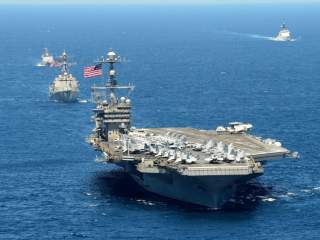America’s Delicate Dance Between Deterrence and Assurance
With allies and adversaries alike, U.S. diplomacy is a complex exercise.
To better balance its relationships with its allies and adversaries, Washington should begin by taking the following five steps.
First, it should avoid the need to deter or restrain allies by continuing to coordinate plans for military contingencies. Washington should pay particular attention to low-level provocations, where there is some ambiguity about appropriate roles and actions. It should give allies the freedom and confidence to respond independently to low-level provocations, but, just as important, clearly communicate to allies what they can expect from the United States and what is out of reach. In short, the United States should continue to deter with its allies, presenting a united front to adversaries.
Second, Washington should ensure that it has the ability to assure adversaries during a crisis by maintaining capabilities and plans that allow it to execute a diverse set of conventional and nuclear strike options. It should develop robust crisis-management mechanisms with nuclear-armed adversaries and ensure that it can convey limited intentions when appropriate. With respect to North Korea, Washington should establish decision criteria for when to carry out limited strikes, as opposed to attempting to disarm its nuclear capability or pursue regime change, and ensure that it has the ability to signal in a crisis by communicating during peacetime and taking advantage of intermediaries.
Third, Washington should ease the tension between its differing approaches to extended deterrence and assurance in Europe and Northeast Asia. To increase allies’ understanding of why deterrence models are different in the respective regions, Washington should facilitate cooperation between European and Asian allies to cross-pollinate ideas about how to better tailor deterrence. At the same time, Washington should ease the tension between its two regional deterrence models by emphasizing that U.S. central nuclear systems are the core pillar of extended deterrence in Europe, just like in Northeast Asia.
Fourth, Washington should be more realistic about the assurances that it can provide to adversaries during peacetime. As the North Korean nuclear and long-range missile programs advance, the United States is likely to deploy a larger and more capable missile defense architecture. At some point, this will make it difficult, if not impossible, to assure China that U.S. missile defense deployments do not affect the reliability of Beijing’s nuclear second-strike capability. Washington should recognize this and plan accordingly.
Finally, Washington should use its extended deterrence dialogues with Japan and South Korea to set the groundwork for future assurances of China. If Washington brings Tokyo and Seoul to understand that U.S. extended deterrence would remain effective even if it were to, for example, publicly acknowledge mutual vulnerability with China, then it would have greater flexibility to, if and when it deems it necessary, provide an assurance to China without causing allied anxiety.
David Santoro is a senior fellow for nuclear policy at the Pacific Forum CSIS in Honolulu, HI. John K. Warden is a strategic analyst at the Scitor Corporation, an SAIC company, in Arlington, VA. These opinions are those of the authors and do not represent those of their employers or clients.
Image: Flickr/Naval Surface Warriors.

